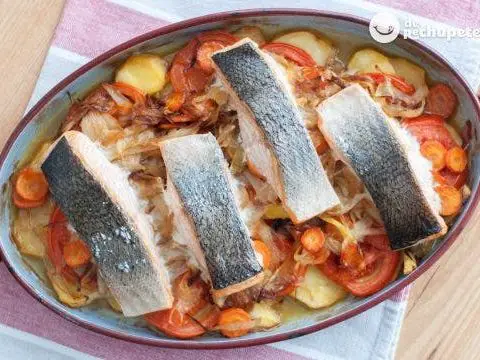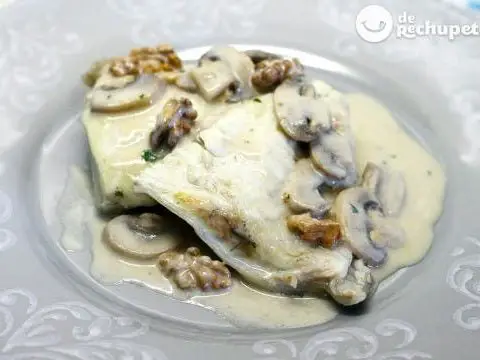
Info.
- 50 minutes
- For 4 people
- 3.2 € / person
- 245kcal per 100g.
How to make Basque hake .
That Basque cuisine has dishes that have crossed its borders, with dishes that are highly recognizable by all, is undoubtedly something.
What does not always happen is that we know the origin of these dishes, their history, why. The fish recipe that I bring you today is one of those we are lucky to know in depth, I am talking about the Basque hake with asparagus.
We can find this recipe with different names and subtle variations, hake koskera , hake in green sauce or hake from San Sebastian are its most popular names.
In this recipe, the use of white or green asparagus is being extended as well as including portions of boiled egg to the final result of the dish.
Be that as it may, with crabs or clams, with or without eggs, with or without chorizo peppers, this is a simple recipe with luxurious ingredients, a dish worthy of the best tables, Basque or not.
Preparation of the clams. Before starting the recipe
- We purify the clams so that they release all the remains of sand that they may have inside.
- To do this, we cover them with quite salty water and let them rest in it for no less than 1 hour.
- We can leave them for several hours if we have time and we do it with anticipation.
- Once we have the clams clean and without traces of sand, drain them, pass them clean water and add them to a saucepan with 1 finger of water in the bottom.
- We cover the casserole and cook the clams for 4 or 5 minutes, just enough for them to open.
- We reserve the clams, strain the resulting broth and reserve.
Preparation of Basque hake
- In a wide saucepan, heat a splash of olive oil.
- Add the chives and the garlic cloves cut into cubes. Fry the vegetables for 15 minutes, until soft.
- Add the flour and integrate it with the vegetables. Let it cook for 2 minutes, thus avoiding the “flour” flavor in the final result.
- Add the white wine, the fish stock and 150 ml to the casserole. of the broth that we have reserved from the cooking of the clams.
- Add a pinch of chopped parsley and cook these liquids for 10 minutes.
- We introduce the hake medallions in the broth and cook for 5 minutes on each side.
- We check the salt point and add if necessary. The broth may have already provided the necessary salt.
Cook the eggs. Final presentation of Basque hake
- While the fish is cooking, cook the eggs in a small saucepan for 8 minutes.
- After this time we cool with cold water, peel and cut into quarters.
- Once we have the hake cooked, remove it from the heat and add the rest of the ingredients, the asparagus, the clams and the chopped eggs to the casserole.
- We serve this great fish dish at the moment, freshly prepared, so that we can enjoy it at its best.
Of course, we must not forget to accompany us with a slice of bread, we will need it to take advantage of this wonder of sauce.
You can see all the photos of the step-by-step recipe for Basque hake in this album. Do not miss any detail and you will get a hake in a luxurious sauce.
Curiosities and history of Basque hake
- Whatever the name with which we find this recipe, we know that the invention of it is in charge of Doña Plácida de Larrea who in the first week of May 1723, created this wonderful dish.
- The correspondence that Doña Plácida had with her friend and namesake Plácida Larrinaga and Eguidazu, came into the hands of Luís Antonio de Vega over the years.
- And it was this that included part of its content in his work Journey through the Spanish Cuisine of 1969 since in the letters the ladies spoke of the magnificent dish of hake prepared and how to do it.
- Good asparagus from Tudela, the hake from the skewer, the crabs from the Idiazabal and the sweet touch of white wine, were indications that Plácida Larrinaga gave her friend for the preparation of the avocado.
- Over the years there have been some variations. The crabs were replaced by clams, the meat of the choricero pepper was sometimes included to add color and flavor to the sauce.





